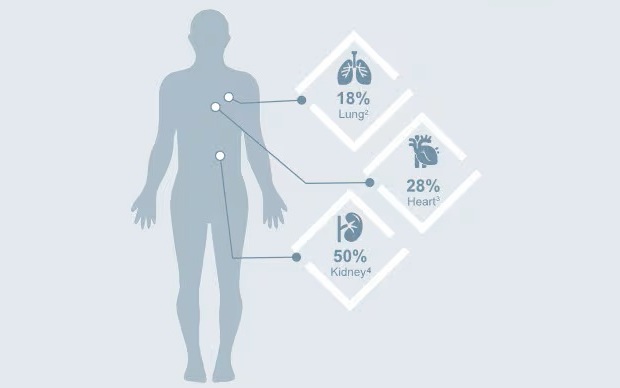Biomarkers Explored in Patients with Acute Coronary Syndromes
By LabMedica International staff writers
Posted on 28 Aug 2018
Well-developed coronary collateral arteries are associated with improved survival in patients with coronary artery disease. A key process in forming new blood vessels is attraction to occluded arteries of monocytes with their subsequent activation as macrophages.Posted on 28 Aug 2018
Vascular endothelial growth factor (VEGF) signaling is a critical step in angiogenesis. VEGF-A is one of five related growth factors, which bind primarily to three tyrosine kinase receptors with different affinity. Cardiac ischemia modulates the regulation and expression of several VEGF family ligands and receptors via Hypoxia Inducible Factor-1 (HIF-1).

Image: The RF-20A fluorescence detector for use with high performance liquid chromatography (Photo courtesy of Shimadzu).
A large team of scientists working with those at the University of Otago (Christchurch, New Zealand) recruited 2,067 patients after admission to Christchurch or Auckland City Hospitals with a diagnosis of acute coronary syndrome (ACS), from July 2002 to January 2009. In the Christchurch subgroup of the cohort collateral vessels were graded according to the Rentrop classification. Coronary artery anatomy, severity of coronary stenoses and the myocardium at risk were assessed according to the Brandt score in the same subgroup.
Plasma samples were collected and stored at −80 °C. Soluble fms-like tyrosine kinase-1 (sFlt-1) and soluble vascular endothelial growth factor receptor (sKDR) were analyzed using chemiluminescent quantitative sandwich enzyme immunoassays detection limits, sFlt-1 3.5 pg/mL and sKDR 4.6 pg/mL. High performance liquid chromatography (HPLC) measurement of pterins was performed using a, Sil-20A HPLC with auto-sampler, with a RF-20Axls fluorescence detector. Genomic DNA was extracted for genotyping was performed by real-time polymerase chain reaction (RT-PCR). Circulating levels of Brain natriuretic peptide (BNP) and N-terminal proBNP (NT-proBNP) were also assayed.
The team found that at baseline, levels of sFlt-1 were significantly correlated with age, alcohol consumption, NT-proBNP, BNP and other covariates relevant to cardiovascular pathophysiology. Total neopterin levels were associated with alcohol consumption at baseline. 7,8 dihydroneopterin was associated with BMI. The A allele of VEGFR-2 variant rs1870377 was associated with higher plasma sFlt-1 and lower levels of sKDR at baseline. Baseline plasma sFlt-1 was univariately associated with all-cause mortality with and in a Cox’s proportional hazards regression model sFlt-1 and pterins were both associated with mortality independent of established predictors.
The authors concluded that there was an independent association of both plasma sFlt-1 and total pterin levels with all-cause and cardiovascular mortality in a cohort of patients with coronary artery disease followed up for several years after an index acute coronary event. The study was published on August 15, 2018, in the journal BMC Cardiovascular Disorders.
Related Links:
University of Otago







 assay.jpg)






